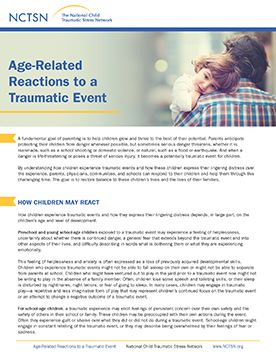
Age-Related Reactions to a Traumatic Event
Describes how young children, school-age children, and adolescents react to traumatic events and offers suggestions on how parents and caregivers can help and support them.
Wildfires are fires that spread rapidly and rage out of control in areas of woodland, brushland, grassland, scrubland, peatland, and other wooded areas. Wildfires differ from other fires based on their larger size, how quickly they can spread from the original source, the potential to change direction unexpectedly, and their ability to jump gaps (e.g. roads, rivers, and fire breaks). Periodic fires can be beneficial to the ecosystem as they can reduce dead plants or an overabundance of live plants, reduce the number of damaging insets, recycle nutrients to the soil, and encourage plant growth. However, they can also cause massive damage to land, wildlife, homes, businesses, and schools. They generate lots of smoke and ash that create additional safety concerns, limiting outside activities, exacerbating medical conditions, or worsening respiratory issues. Wildfires are most common during the summer and fall when weather is dry, as well as during droughts. They commonly start and spread on “red-flag days” when it is windy, hot, and dry. Wildfire-damaged communities can be at increased risk for flooding and mudslides during heavy rains, which may create additional stress in the weeks, months, and years following the event.
Being prepared beforehand is the best way to help children and family members recover after a wildfire. To improve their preparedness, families should:
Knowing what to do during a wildfire can help families feel more in control and take steps to increase their safety. Consider the following:
During a wildfire but when not in an evacuation zone, families should:
During an evacuation, families should:
Immediately after a wildfire is contained, families should:
To address children’s reactions during a wildfire, parents and caregivers can:
After a wildfire, most families will recover over time, particularly with the support of family, friends, and organizations. The length of recovery depends, in part, on if they had to evacuate and how much time they had to respond, and the extent of the damage and loss in the community. Some families will be able to return to their normal routines rather quickly, while others will have to contend with loss and damage to their home and possessions, finding new housing, and financial hardship. Some families live in areas where they will have additional risks of floods or mudslides during the rainy season which will create additional anxiety and worry.
Children will react differently to wildfires depending on their age, developmental level, and prior experiences. Children may be very concerned about safety, and worry that another wildfire may occur. They may also get reminded when they see any type of fire (campfires, barbeques, fire in a fireplace), smell smoke or see ash, experience windy days or warm dry weather, or watch holiday fireworks. Children may also exhibit changes in their behavior, such as clinging to parents or caregivers, experiencing more headaches and stomachaches, performing poorly at school, or withdrawing from activities they used to enjoy.
Children’s functioning and recovery will be influenced by how their parents and caregivers cope after the wildfire and the behaviors they model. Children often turn to adults for information, comfort, and help. Parents and caregivers should:
In response to the recent wildfires in Maui, and across the US, the National Child Traumatic Stress Network has developed resources to help children, families, and communities navigate what they are seeing and hearing, acknowledge their feelings, and find ways to cope together.

Describes how young children, school-age children, and adolescents react to traumatic events and offers suggestions on how parents and caregivers can help and support them.
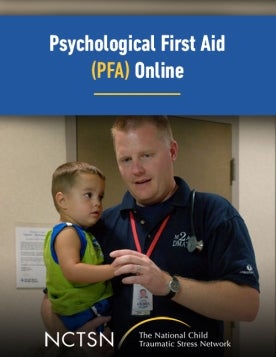
Includes a 5-hour interactive course that puts the participant in the role of a provider in a post-disaster scene. This course is for individuals new to disaster response who want to learn the core goals of PFA, as well as for seasoned practitioners who want a review.
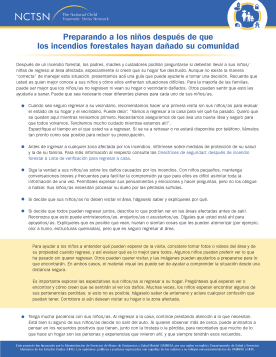
Offers guidance to parents and caregivers on deciding whether or not a child should return to their home or neighborhood after it was damaged in a wildfire. Translated 2024.

Ofrece ideas de actividades para padres y cuidadores cuyas familias se están refugiando en el lugar, sin electricidad y recuperándose de un huracán u otro evento.
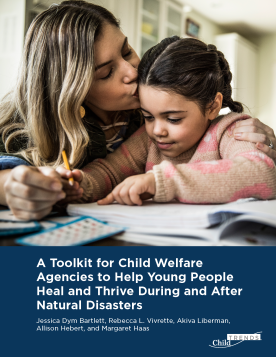
Helps child welfare agencies support children and youth during and after natural disasters. This toolkit is for child welfare staff, supervisors, and administrators who work with and on behalf of children, youth, and families who experience a natural disaster.
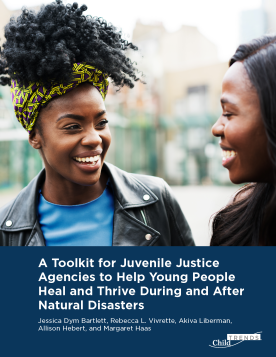
Helps juvenile justice agencies support children and youth during and after natural disasters. This toolkit is for juvenile justice staff, supervisors, and administrators who work with and on behalf of children, youth, and families who experience a natural disaster.
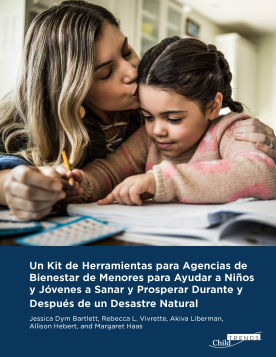
Ayuda a las agencias de bienestar infantil a apoyar a los niños y jóvenes durante y después de los desastres naturales.
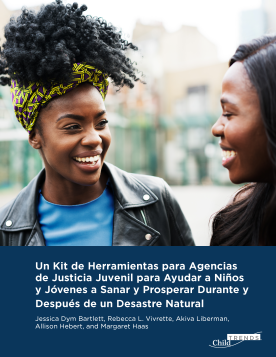
Ayuda a las agencias de justicia juvenil a apoyar a los niños y jóvenes durante y después de los desastres naturales.
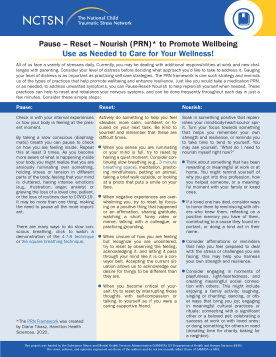
Provides information about the specific self-care strategy of Pause-Reset-Nourish, or PRN.
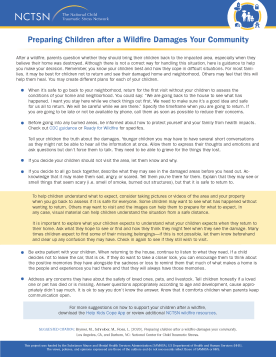
Offers guidance to parents and caregivers on deciding whether or not a child should return to their home or neighborhood after it was damaged in a wildfire.
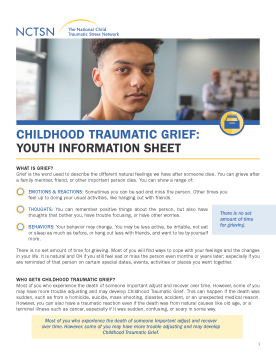
Offers information for youth to help them understand the differences between grief and traumatic grief, the signs and symptoms of traumatic grief in children and youth, and what to do to feel better.
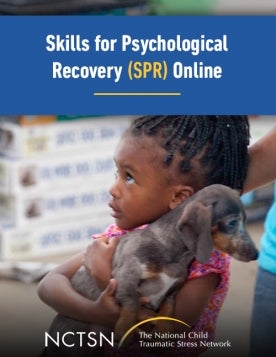
Aims to help survivors gain skills to manage distress and cope with post-disaster stress and adversity. This course utilizes skills-building components from mental health treatment that have been found helpful in a variety of post-trauma situations.